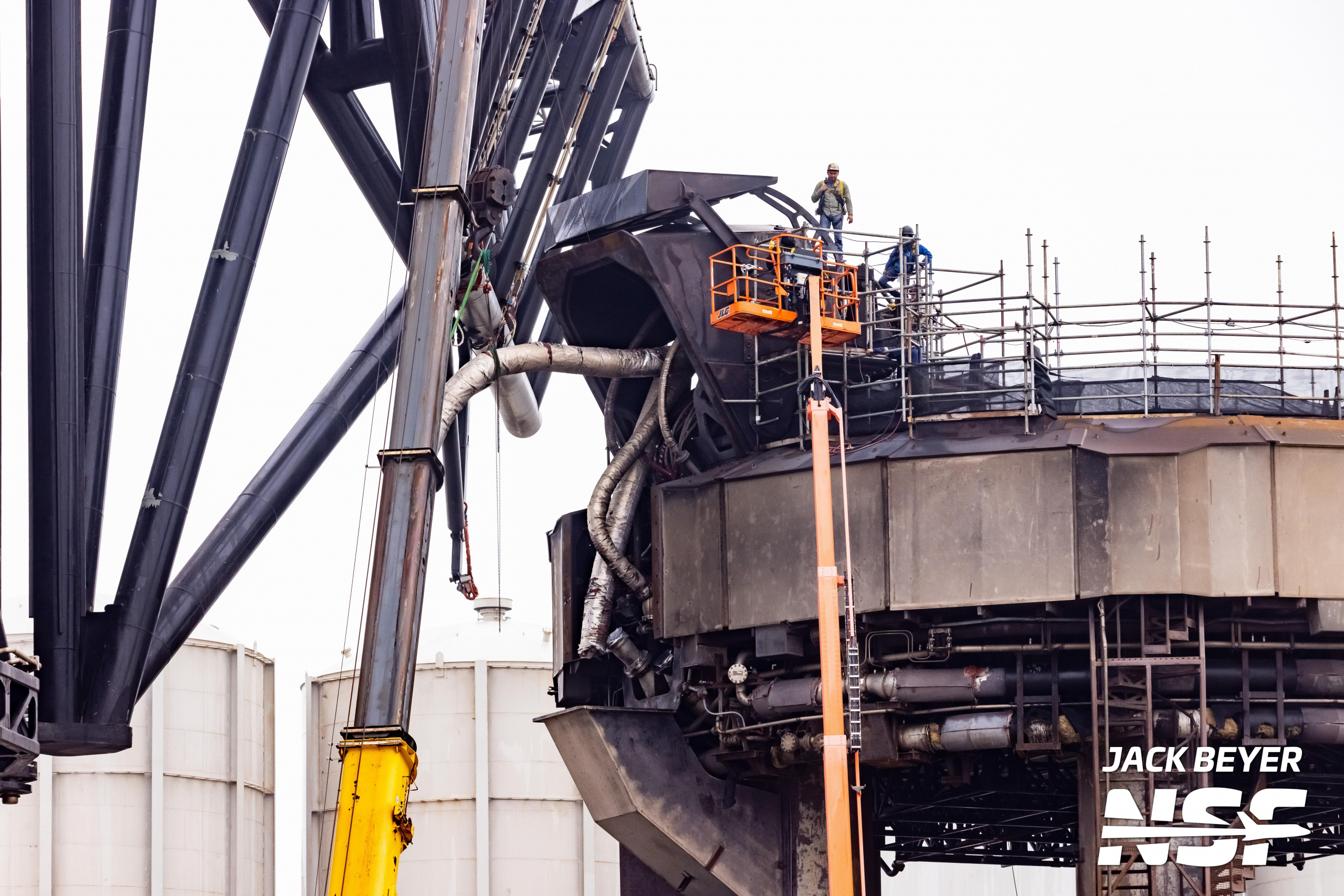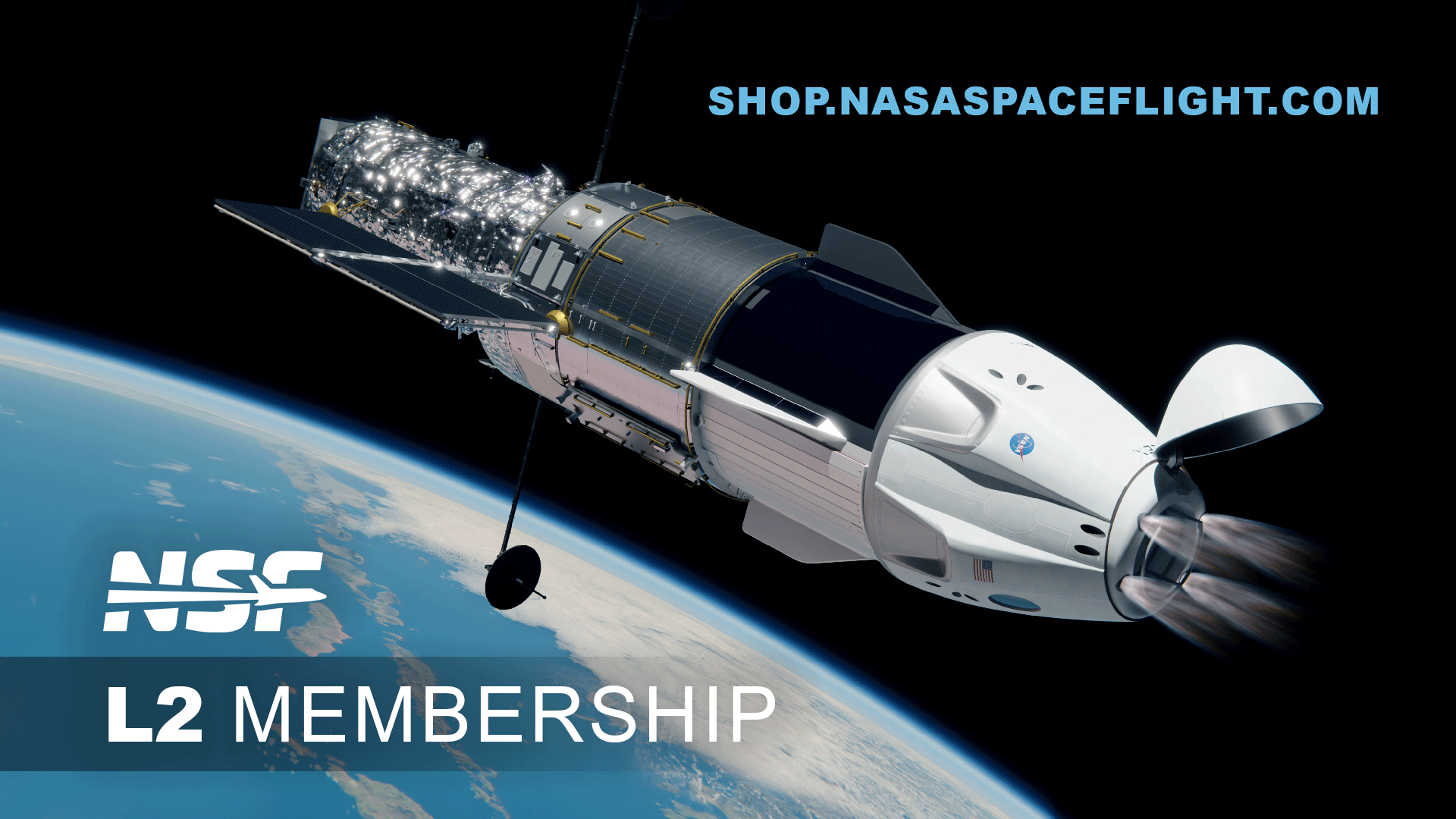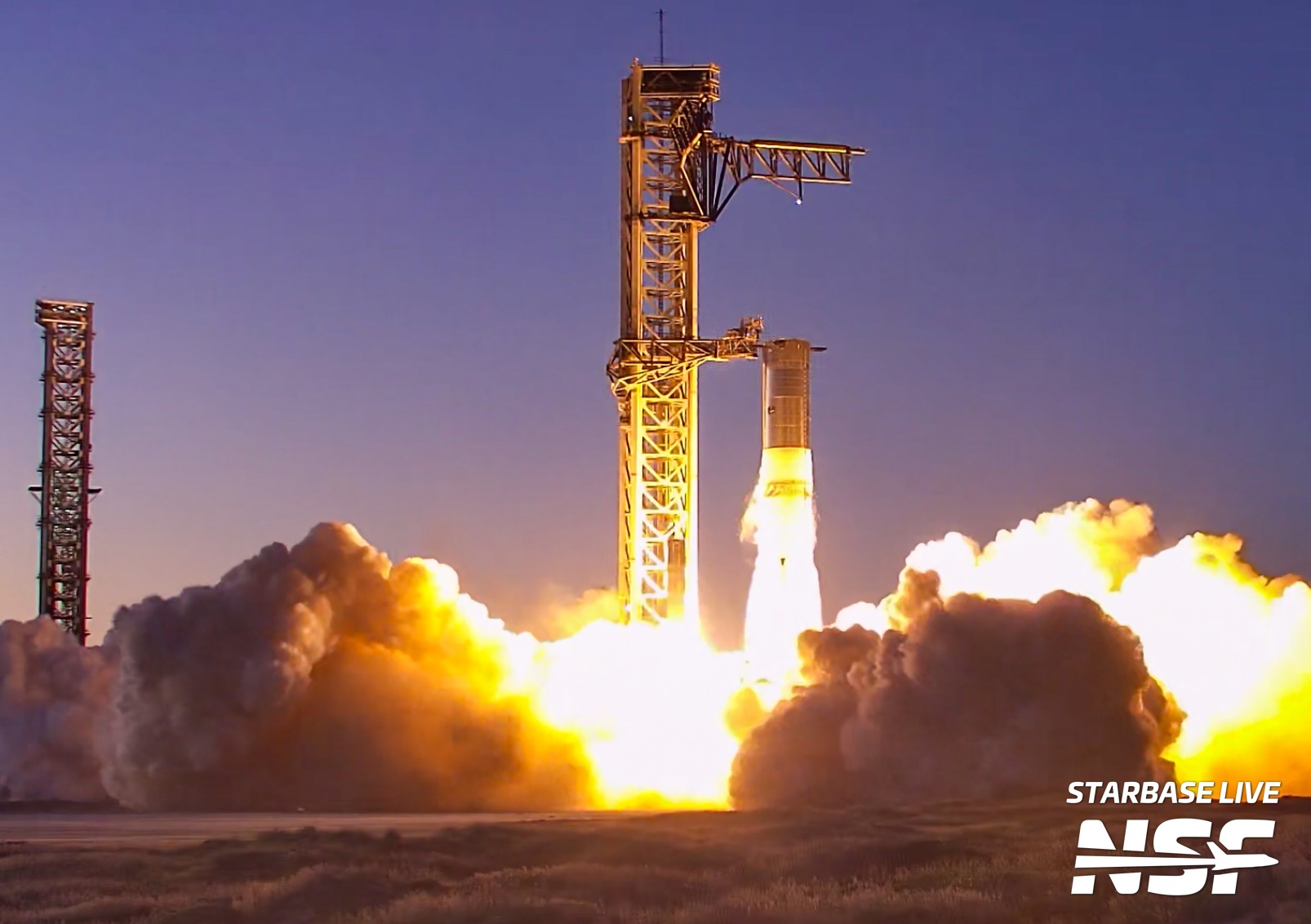SpaceX is preparing to follow up its third flight of Starship – one that achieved another leap forward with the world’s largest rocket in history – with the IFT-4 mission. Potentially as early as May, the fourth flight is expected to pair Booster 11 with Ship 29, with the latter already back at the launch site for its Static Fire test campaign.
Flight 3 Excels
Ship 28 and Booster 10 lifted off from Orbital Launch Pad A in Boca Chica, Texas, at 8:25 a.m. CDT. Right away, Booster 10 had all 33 engines running, just like Flight 2, and the booster kept all engines running during ascent once again.
Then came Most Engines Cutoff (MECO) and stage separation at T+2 minutes and 48 Seconds, where Ship 28 would hot stage away from Booster 10. Hot staging once again worked perfectly, and as a bonus, Booster 10 would complete its flip maneuver and boost back burn, a first for Super Heavy. After the burn, Booster 10 would start its glide down to the Gulf of Mexico.
Starship’s Raptor engines have ignited during hot-staging separation. Super Heavy is executing the flip maneuver pic.twitter.com/T593ACilyD
— SpaceX (@SpaceX) March 14, 2024
Booster 10 then glided down through the atmosphere, staying stable at first with its grid fins. Unfortunately, though, it suffered from a roll oscillation, rolling back and forth, and was unable to stabilize before crashing into the Gulf.
SpaceX is yet to reveal if this was caused by software or hardware issues, or high wind sheer, which it couldn’t counter. Either way, Booster 10 performed even better than Booster 9, which paves the way for Booster 11 to make the first soft splashdown.
Booster had a good college try at the soft landing. Fair play, grid fins. This is massive progress.
Amazing onboards. pic.twitter.com/p78IJFvd19
— Chris Bergin – NSF (@NASASpaceflight) March 14, 2024
Ship 28 would complete its burn with Second Stage Engine Cutoff (SECO) at T+8 minutes and 35 seconds. Ship 28 would become the first Starship to enter the coast phase after a successful launch, and thanks to Starlink, footage continued to be beamed back to Earth.
During the coast phase, Ship 28 had a few objectives to complete before reentry.
First, there was the payload door test, which appeared to open partially, allowing all the gasses trapped inside the payload bay to escape out into space. There are indications that the door never fully opened, but this was inconclusive via the interior cams.
Pez door checkout complete, door closing, and HD views are over @Starlink pic.twitter.com/Kmb2SpMVTu
— SpaceX (@SpaceX) March 14, 2024
Next up was the cryogenic propellant transfer test, where SpaceX would transfer around ten tons of Liquid Oxygen (LOX) from the LOX header tank to the main tank. SpaceX had a call out during the coast phase that the propellant demo had been completed. There is no video confirmation of this, but teams will analyze the data to determine its success.
The final objective was to complete an in-space burn of a sea-level Raptor. However, this was canceled due to high roll rates on Ship 28 that could not be corrected. So SpaceX opted not to risk the vehicle and had it stay within the reentry corridor.
Then came Ship 28’s reentry, but due to an attitude control problem that could not be corrected, Ship 28 reentered on its side and engines first. However, thanks to the Starlink downlink, live plasma interaction could be seen as Ship 28 began to reenter.
Ship 28 would be lost during reentry but had already completed many new objectives, paving the way for Flight 4.
Due to Booster 10 failing to complete a soft water landing and Ship 28 unable to complete reentry, SpaceX will have to perform a mishap investigation once again to determine why these failures occurred.
For IFT-4, Ship 29 was rolled out and lifted onto Suborbital Pad B, resuming its engine test campaign after completing a spin prime before Flight 3.
This test campaign should include at least a six engine static fire and possibly a single engine static fire. A single engine static fire would most likely be similar to Ship 28’s, which was the simulated in-space burn. There are road closures set for March 25, 26, and 27 which run from 8 am – 8 pm CDT for testing.
Ship 29 is rolling back to the launch site for its Static Fire test ahead of flying on IFT-4.https://t.co/e3xbqPnwZ5 pic.twitter.com/evfC5S1uRS
— Chris Bergin – NSF (@NASASpaceflight) March 22, 2024
Ship 29’s partner, Booster 11, has been on the right side Mega Bay work stand since Nov. 20. Booster 11 has already completed its cryogenic proof testing and should be ready for static fire testing as soon as the Orbital Launch Mount (OLM) is once again ready for testing.
The OLM will require some repairs and work. Teams took apart the Booster Quick Disconnect (BQD) hood to reveal significant damage to the main Liquid Oxygen (LOX) and Liquid Methane (LCH4) cryogenic hoses that supply the booster. These must be repaired or replaced before any testing can occur on the OLM.

Booster Quick Disconnect Hoses (Credit: Jack Beyer for NSF)
During the Satellite Conference, SpaceX’s Chief Operating Officer Gwynne Shotwell stated that Starship should be ready to fly again in about six weeks, adding that Flight 4 would not have satellites on board.
Most likely, though, the goal for Ship 29 is to complete the in-space burn that couldn’t be done on Ship 28 and try to have vehicle control during reentry.
In addition, Gwynne Shotwell stated that the goals for the Starship program this year are to reach orbit, deploy satellites, and recover both stages. It is unclear if Gwynne Shotwell means just soft water landings or catching a booster and ship when referring to recovering both stages.
SpaceX has a lot of work ahead of the next flight, and if fully successful, it could have the most powerful operational rocket in human history available for use. All Starship needs to complete is at least an in-space burn, and SpaceX can start putting satellites into orbit.
Feature Image: Booster 10 and Ship 28 in Flight (Credit: Mary (@bocachicagal) For NSF)





